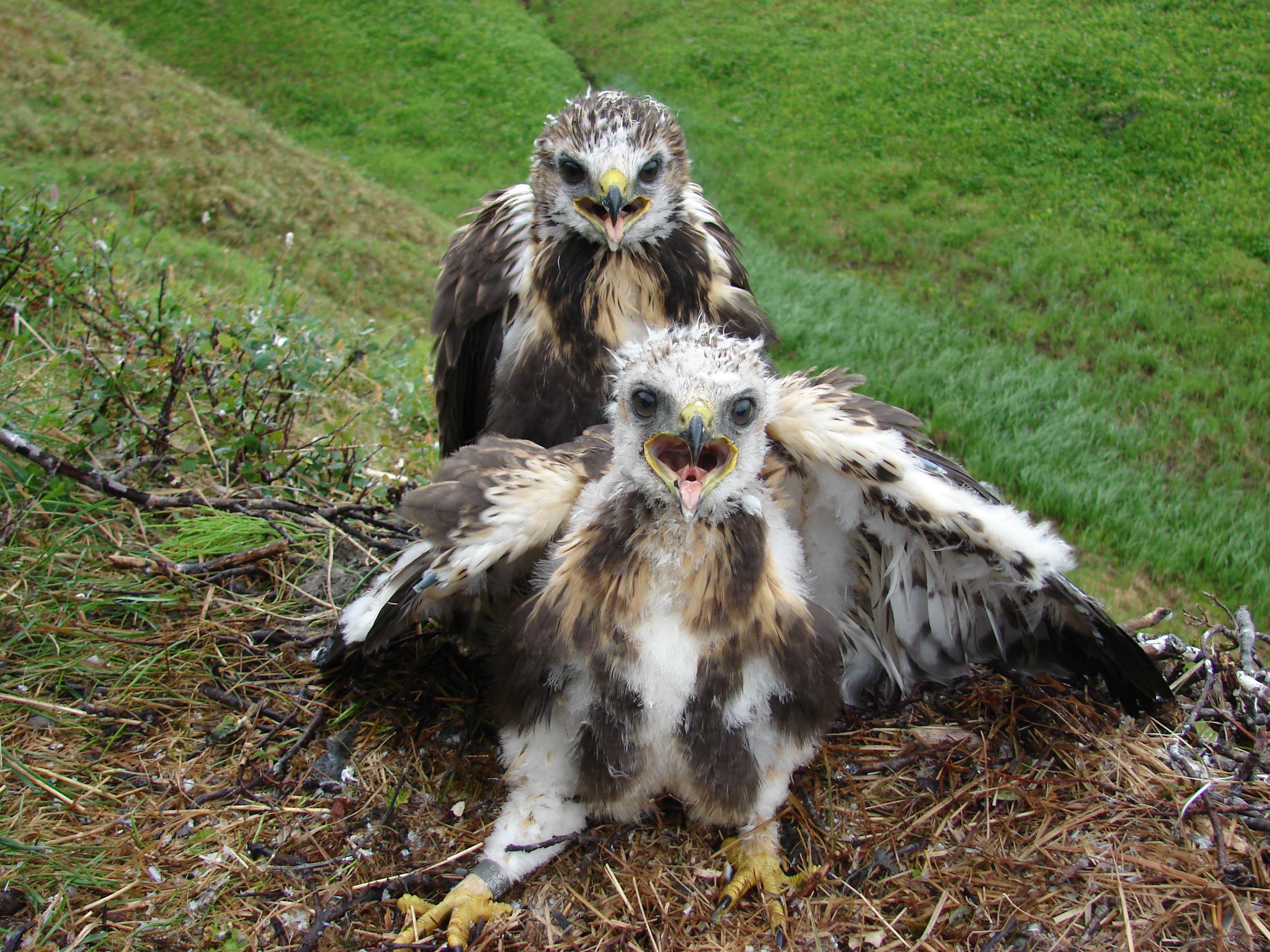By Ivan Pokrovsky
Linked paper: Nest association between two predators as a behavioral response to the low density of rodents by I. Pokrovsky, D. Ehrich, I. Fufachev, R.A. Ims, O. Kulikova, A. Sokolov, N. Sokolova, V. Sokolov, and N.G. Yoccoz, The Auk: Ornithological Advances.
Different raptor species in the Arctic nest at least 700 to 1,800 meters apart — except for the Rough-legged Hawk. These hawks nest as little as 50 meters from Peregrine Falcons. The most obvious explanation for these close neighbors is that hawks nesting near Peregrine Falcons may benefit from their protection. Peregrine Falcons are highly aggressive and are very efficient at protecting their nesting territories from predators. This explains why Barnacle Geese, Red-breasted Geese, and other Arctic goose species form nesting colonies around Peregrine Falcon nests. But do hawks really need additional protection for their nests? Could there be another reason for this nest association between two raptors? We suggest an alternative explanation for this behavior in our new study.
Because Peregrine Falcons drive off other predators, their protective effect could extend to the Rough-legged Hawk’s preferred prey, small rodents. That is, Peregrine Falcon nests may create local patches with a high density of small rodents. Such rodent “hot spots” may be attractive and beneficial to Rough-legged Hawks. During our study in the Russian Arctic, we assessed which of these two hypotheses, nest protection or rodent availability, may explain why hawks nest near falcons.
We carried out our research in two regions of the Russian Arctic, the Nenetsky Nature Reserve and the Yamal Peninsula. In Nenetsky, the hawks switched to alternative prey when small rodents were scarce, and their breeding density did not depend on small rodent abundance. In Yamal, however, hawks were strict small-rodent specialists, feeding mostly on this preferred prey regardless of their abundance, and breeding density strongly correlated with small-rodent abundance. Given the contrast in the degree of specialization of Rough-legged Hawks in the two study regions and our two hypotheses, we made three predictions and tested them.
Both of our hypotheses predict that the breeding success of Rough-legged Hawks will be higher for pairs that nest near with Peregrine Falcons, independent of the study region. During our study, we found the number of fledglings was 1.8 times higher for the nests that were associated with Peregrine Falcons. Thus, Rough-legged Hawks appeared to benefit from this association.
The basic prediction of the rodent availability hypothesis is that the density of small rodents is higher around Peregrine Falcon nests than in a similar habitat without Peregrine Falcons. Based on our surveys of rodent density around Peregrine Falcon nests and at control locations 500 meters from the nests, small rodents were two to three times higher near the nests. This suggested that our rodent availability hypothesis was at least a possibility.
From previous studies, we knew that nest association between Peregrines Falcons and Rough-legged Hawks occurred mostly in years with a low density of small rodents. Therefore, our third prediction was that if the rodent availability hypothesis were true, then this relationship would be likely in Yamal but not in Nenetsky. In Nenetsky, where Rough-legged Hawks switch to alternative prey when small rodents are scarce, they would not need to look for spots with a high density of small rodents. If, on the other hand, the defense hypothesis is true, then nesting association between Rough-legged Hawks and Peregrine Falcons would be more likely in years of low small rodent density in both Yamal and Nenetsky, because in such years nest predation risk generally also increases. For five field seasons in Nenetsky and nine in Yamal, we measured the abundance of small rodents at the landscape level and estimated the occurrence of nest associations between hawks and Peregrines. We found that nest association increased with low abundance of small rodents in Yamal but not in Nenetsky. This result provides strong evidence in support of the rodent availability hypothesis.
Our findings could also be relevant for other species and systems. Nest association can not only be formed directly because of the attractiveness of one species to another one, but also indirectly through the effects that one species has on the environment. This phenomenon shows us how birds, and raptors in particular, adapt to the unstable tundra environment and compensate for resource depletion.
